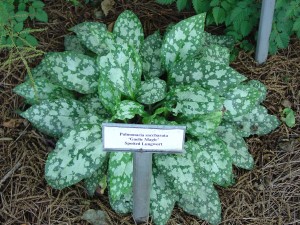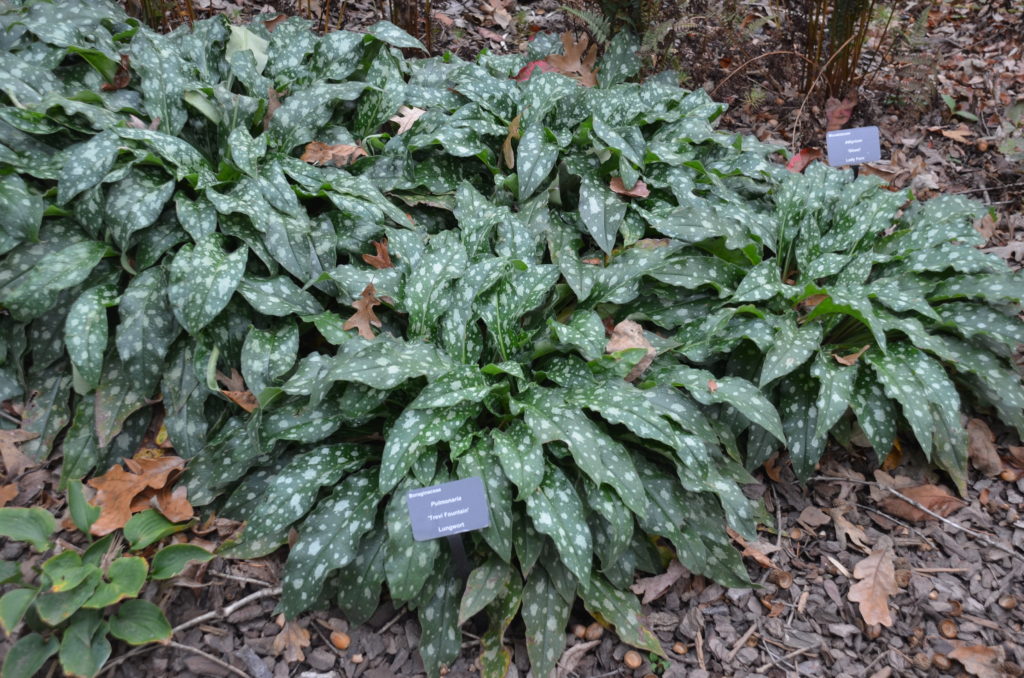

Although my multi-year addiction for hostas has never waned, I remain equally passionate about the lungworts (Pulmonaria spp.). Lungwort is also called Bethlehem sage and Jerusalem sage. Their uniquely splotched or variegated foliage wakes up a dark patch in any shade garden.
Lungworts are planted as ground covers and for color accents. In early spring (March), lungworts send up small lovely bouquets of small tubular flowers. Flower colors, depending on variety, range from white, lilac, pink and blue.
Lungworts are vigorous and long lived. Several are semi-evergreen in garden zone 6 and deciduous in zone 5. Their culture is almost identical to hosta. Grow them in compost-rich soil and keep plants mulched and moist in the summer months. Lungworts benefit from division every 4-5 years.
Pest problems are rare, although some cultivars may be susceptible to mildew. The species P. longifolia and hybrids thereof, with long narrow or lance-shaped leaves, are most adaptable to gardens in the Southern Appalachian region (USDA zones 6 and 7). They’re more resistant to mildew diseases and high temperature dieback. Occasionally, snails and slugs are problem pests.
Suggested companion plants include ferns, small leaved hostas, bluebells (Mertensia), coralbells (Heuchera spp.), foamflowers (Tiarella spp.), dwarf variegated Solomon seal (Polygonatum spp.), and lenten rose (Helleborus spp.).

 Posted in
Posted in 
